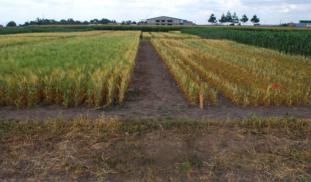43
0
0
Like?
Please wait...
About This Project
Drought threatens sustainability of agriculture throughout the world. A US native gypsum-endemic grass, Sporobolus nealleyi may harbor the unique ability to extract water during drought from gypsum rock. Though genetically similar to crops such as rice, wheat and corn, the mechanisms responsible for this behavior in S. neallyi is unknown. A genome sequence can enable initial research to identify these mechanisms to leverage in development of improved drought-tolerance in such grain crops.

Browse Other Projects on Experiment
Related Projects
How do polar bears stay healthy on the world's worst diet?
Polar bears survive almost entirely on seal fat. Yet unlike humans who eat high-fat diets, polar bears never...
Uncovering hidden insect diversity associated with a likely undescribed gall-forming midge
Does a likely undescribed species of gall-forming midge (pers. comm. Ray Gagné) on Eriodictyon plants (Yerba...
Macrofungi of the California archipelago
The eight islands of the California Archipelago are a well-studied biodiversity hotspot — but we know almost...

